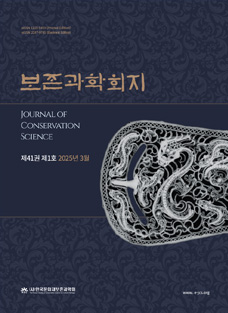Journal of Conservation Science Vol.30 No.4 pp.335-343
유물분석 자료를 통한 백제지역의 제철과 철기 제작기술 연구
A Study on Iron Manufacturing and Technology through Analysis Reports of Iron artifacts in the Baekje Area
Abstract
This study classified the result of non-metallic inclusion analysis and result of microstructure investigation on the ironware excavated in the Baekje region into Han River, Geum River, and Yeongsan River to estimate the iron making temperature and study the characteristics of regional and temporal characteristics of the heat treatment technology and steel making technology. Regardless of era, bloom iron and sponge iron are judged to be the major method for making as a directreduction process in all three regions. The result of the reinterpretation of the non-metallic inclusion by the oxide ternary constitutional diagram suggest that the temperature inside of the furnace is estimated to be between 1,100~1,300℃ while making the steel. The magnetic iron ores are the major raw material of steel ore and irons with high TiO2 are estimated to use iron sands. Ironware with CaO/SiO2 rate higher than 0.4% are considered to have artificially added the flux of calcareous materials. It was found that the iron making method is the solid caburizing-steel which caburizes low-carbon steels by the CO gas and CO2 gas created when heating the forging furnace with charcoal. Also, the ironware manufacturers in the Baekje during 3rd century recognized the heat treatment technology as they performed carburizing process and quenching to intentionally increase the strength of necessary parts.

 E-Submission
E-Submission 
 E-Submission
E-Submission 
![]() Journal Search Engine
Journal Search Engine




 KSC
KSC